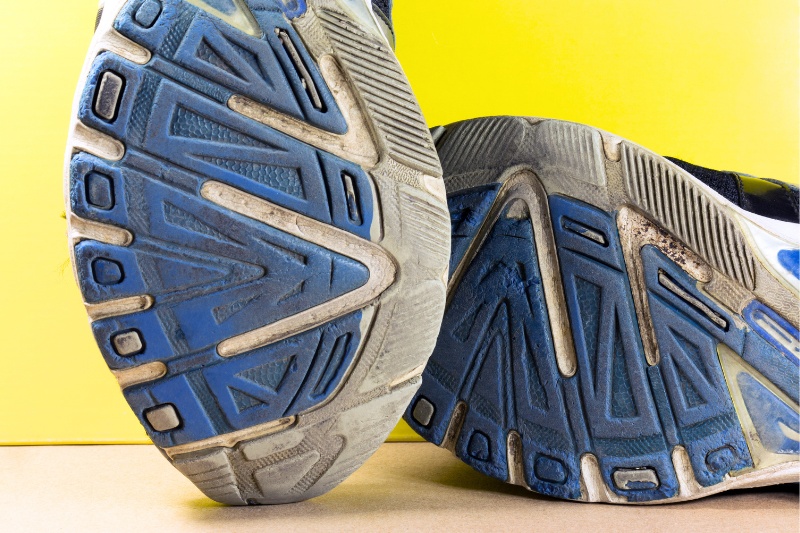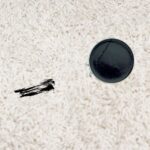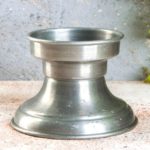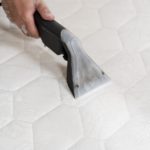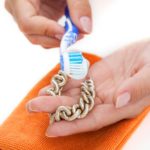Shoes are more than just a practical necessity – they’re an expression of our style and personality!
However, even the most beloved pair of shoes can accumulate dirt, stains, and unpleasant odours on their soles with wear. Fortunately, the solution to revitalising your footwear lies at your fingertips.
In this guide on how to clean shoe soles, we take you through the essential steps to clean the bottom of your shoes effectively.
We’ve got four different cleaning methods for various uses, plus top tips on how to keep your newly cleaned shoes in pristine condition.
Say goodbye to unsightly scuffs and hello to a fresh, clean foundation for your fashionable footwear.
Things to Do Before Cleaning Shoe Soles
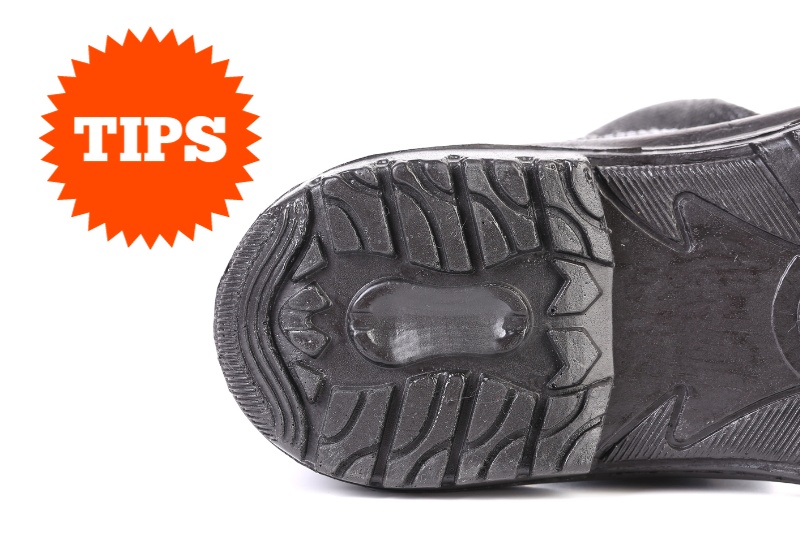
You can choose from several methods to clean sole shoes, which we have listed below. Before you start following any of them, make sure you do these three things:
- Prepare your workspace: Find a suitable area to clean your shoes, preferably outdoors or in a well-ventilated room, to avoid inhaling any cleaning fumes. Lay down old newspapers or a plastic sheet to protect your work surface and catch any spills.
- Remove the laces: If your shoes have laces, take the shoelaces off and set them aside. Cleaning the soles will be easier without them. You can clean the shoelaces separately if needed—put your laces in the washing machine or wash them by hand.
- Knock off loose dirt: Use your hands or a brush to remove any loose dirt, pebbles, or debris stuck to the sole. This will make the cleaning process more effective. We recommend bashing the shoes outside and away from the cleaning area.
Once you have followed these steps, continue with the instructions below. We have given you four different methods, each of which is better suited to specific issues:
- Bicarbonate of soda: Best for deep cleaning shoe soles
- Toothpaste: Best for spot-cleaning scuffs and stains
- Washing-up liquid: Best for lightly cleaning the bottom of shoes
- White vinegar: Best for cleaning and deodorising
How to Clean Shoe Soles with Bicarbonate of Soda
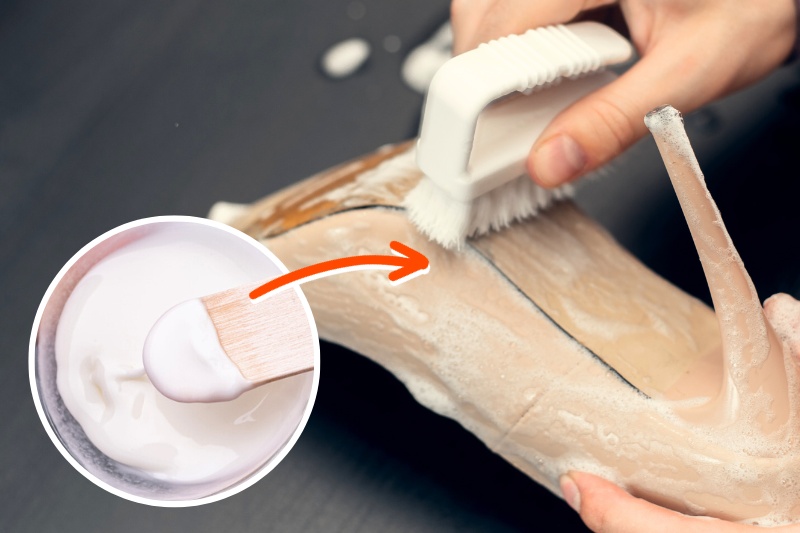
Bicarbonate of soda (or baking soda if you’re in the US) is a natural and effective cleaning agent you may already have in your home.
It can be used to clean everything from shower trays to dishwashers, and it’s useful for cleaning shoe soles, too. Here is a step-by-step guide to the process:
- Mix bicarbonate of soda with a small amount of warm water in a bowl or container to create a cleaning paste. You want the mixture to be thick enough to spread but not too runny.
- Use your finger or an old toothbrush to apply the cleaning paste to the soiled areas of the shoe soles. Concentrate on stains or places with stubborn dirt.
- Gently scrub the shoe soles, using a circular or back-and-forth motion to work the paste into the sole. The bicarbonate of soda acts as a mild abrasive to help lift stains and dirt.
- After scrubbing, allow the bicarbonate of soda paste to sit on the soles for about 10 to 15 minutes. This gives it time to break down stains and absorb odours.
- Rinse the shoe soles thoroughly with warm water to remove the bicarbonate of soda cleaning paste. You can use a garden hose, sink tap, bucket of water, or a damp microfibre cloth.
- Pat the shoe soles dry with a clean cloth or paper towel. Ensure they are completely dry before being put into storage or wearing the shoes again.
For persistent odours, you can also sprinkle bicarbonate of soda directly onto the shoe soles and leave it overnight.
This gives the powder more time to absorb any lingering smells coming from the bottom of your shoes. Shake off the excess bicarbonate of soda in the morning.
How to Clean Shoe Soles with Toothpaste
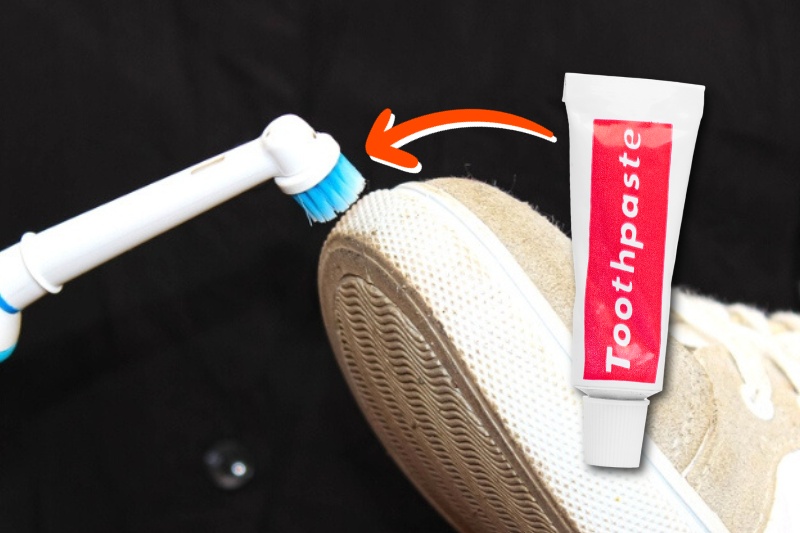
Toothpaste is another effective cleaner for spot-cleaning shoe soles. It must be non-gel toothpaste, and you’ll want to avoid coloured products—stick with plain white toothpaste instead.
The toothpaste acts as an abrasive cleaner and removes scuff marks. Here is how to use it to clean your shoe soles:
- Squeeze a small amount of white toothpaste directly onto the stained or soiled areas of the shoe soles. Focus on the scuff marks rather than covering the entire base of the shoe.
- Take an old toothbrush and use it to scrub the toothpaste into the shoe soles. Apply gentle pressure and use a circular motion to work the toothpaste into the scuff marks.
- Once you’ve scrubbed the shoe soles with toothpaste, rinse them thoroughly with warm water. This removes the toothpaste residue, leaving clean soles behind.
- Inspect the bottom of your shoes to see if any stains or scuff marks remain. If needed, you can repeat the toothpaste scrubbing process, focusing on the stained areas again.
- Dry the shoe soles using a clean towel or paper cloth before storing or wearing them again. This helps to prevent new dirt from sticking to the clean soles and minimises damp odours.
While cleaning shoe soles with toothpaste is a handy and cost-effective method for spot cleaning and removing stains, it may not be suitable for all types of shoes.
Be sure to first test a small, inconspicuous area to ensure it doesn’t damage or discolour the sole material.
How to Clean Shoe Soles with Washing-Up Liquid
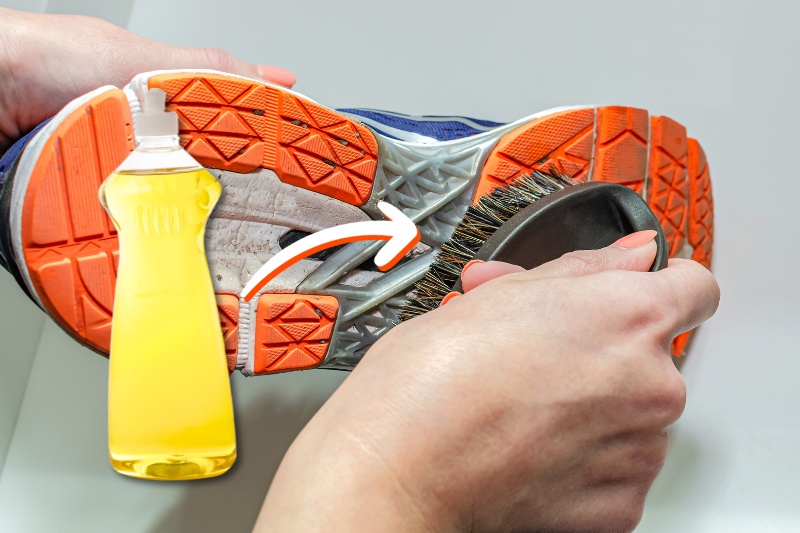
You can clean shoe soles with washing-up liquid (dish soap), a mild detergent that can effectively remove dirt and stains without causing damage to your shoes.
However, its gentle nature makes it best for general upkeep rather than tackling extremely dirty or stained shoes.
Here are the steps:
- Fill a shallow container with warm water and add a small amount of washing-up liquid, such as Fairy. You only need a few drops of soap to create a soapy solution.
- Place your shoes into the soapy water, ensuring only the soles of the shoes are submerged in the liquid. Allow them to soak for up to 15 minutes, soaking one at a time if limited on space.
- Remove your shoes from the soapy water and use a toothbrush to scrub the soles. Work in circular or back-and-forth motions to help break down and lift the dirt.
- Once you’ve scrubbed the soles, rinse thoroughly with water to remove any soap residue. You can either dip a microfibre cloth in water and wipe the soles or rinse them under the tap.
- Afterwards, wipe the shoe soles with a clean cloth or paper towel. Allow them to air dry after to ensure they’re completely dry before wearing them again or putting them back into storage.
How to Clean Shoe Soles with White Vinegar
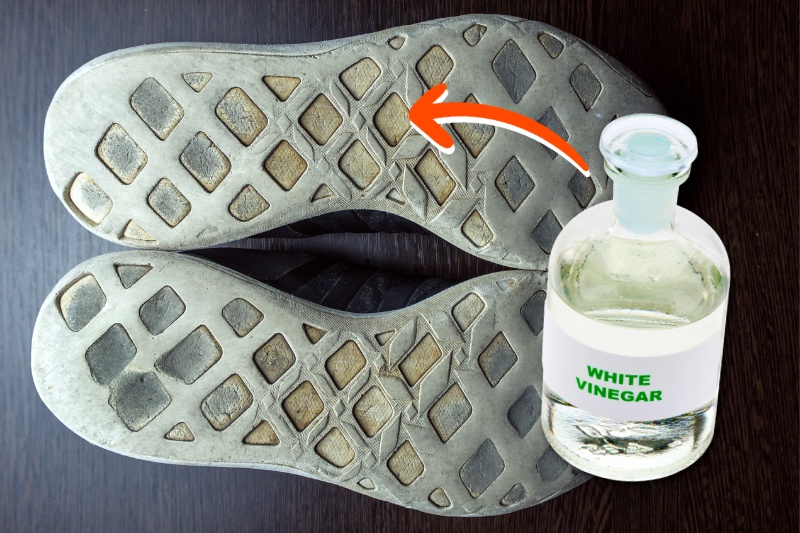
Cleaning shoe soles with white vinegar can effectively remove stains and general dirt buildup.
It is also a natural deodoriser, making it ideal for removing unpleasant smells from the bottom of your shoes. Here’s how to clean shoe soles using this method:
- Mix equal parts of white vinegar and water in a bowl or container. For example, you can use 100 ml of white vinegar and 100 ml of water.
- Dip an old toothbrush or scrub brush into the white vinegar-water solution, and then apply it to the stained or soiled areas of the shoe soles.
- Use the toothbrush to scrub the vinegar solution into the shoe soles. Apply gentle pressure and use a circular or back-and-forth motion to work the solution into the stains and dirt.
- While scrubbing, pay particular attention to any stubborn stains or marks on the soles. You may need to spend extra time scrubbing these areas.
- Once you’ve scrubbed the shoe soles with the vinegar solution, rinse them thoroughly with warm water to remove the vinegar residue.
- Use a clean cloth or paper towel to dry the bottom of the shoes. Ensure they are thoroughly dry before wearing them again or returning them to a cupboard or shoe rack.
If your shoes have a persistent odour, you alternatively can soak the entire sole area in a mixture of one part white vinegar to two parts water (e.g. 100 ml of vinegar and 200 ml of water) for 15 to 20 minutes. After soaking, rinse with warm water and allow the shoes to dry completely.
Cleaning shoe soles with white vinegar is generally safe for most shoe materials. Still, it’s a good idea to test an inconspicuous area first to ensure it doesn’t damage or discolour the sole material, especially if you have delicate or high-end shoes.
How Do You Keep White Rubber Soles Clean?
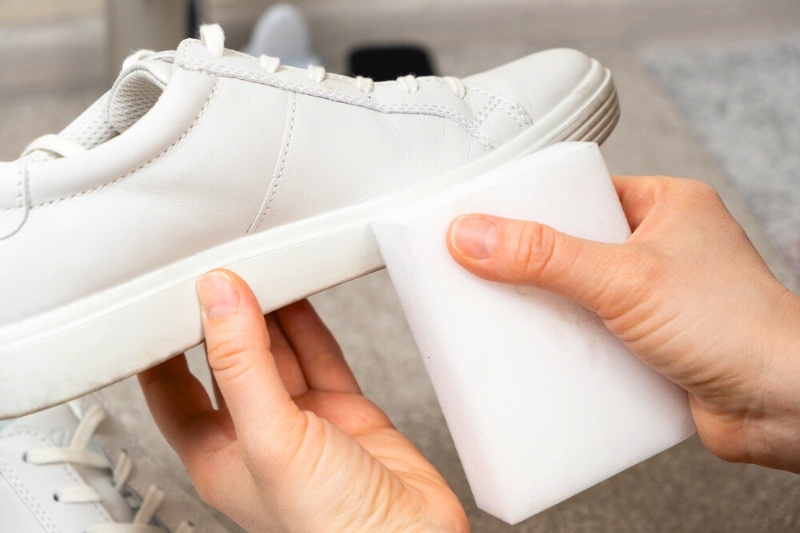
Once you have cleaned the soles of your shoes, you’ll want to keep them looking like new. However, keeping the bottom of your shoes (particularly white rubber soles) clean can be challenging. They show dirt and stains easily, which quickly accumulate after a few wears outside.
Fortunately, we have some tips to help you keep white rubber soles clean:
- Regular cleaning routine: Establish a regular cleaning routine using one of our tried-and-tested methods to prevent dirt and stains from building up. The more frequently you clean your white rubber soles, the easier it will be to maintain their appearance.
- Clean immediately: If you’ve been out on a muddy walk or have obvious stains on your shoes, don’t wait until it’s time for a regular clean—clean your shoe soles as soon as you notice dirt or stains. The longer you wait, the harder it may be to remove the marks.
- Use a soft brush: In between cleans, use a soft-bristle brush (such as an old toothbrush) to gently scrub away dried dirt and debris from the rubber soles. Avoid using abrasive materials or harsh brushes that could damage the rubber.
- Spray with white vinegar: Vinegar can be used for cleaning, but you can also spritz the soles of your shoes with a 50/50 water and vinegar solution and allow it to air dry. The vinegar helps kill odour-causing bacteria and keeps your shoes smelling good between washes.
- Dry thoroughly: After cleaning your shoes, ensure the soles are completely dry before wearing them again. Leaving them damp can attract more dirt, meaning they dirty quickly and need cleaning more frequently.
- Protective sprays: Consider using a protective spray specifically designed for the material your shoe soles are made from, such as the Netagon Shoe Protector Spray for rubber soles. These sprays can create a barrier that makes wiping away dirt and stains easier.
- Proper storage: Store your shoes properly to prevent them from coming into contact with grime when not being worn. Shoe cabinets work great, but you can also lay them in storage bins, purchase over-the-door racks, or try a range of other shoe storage solutions.

Hannah has a passion for cleaning. She worked her way around Australia by cleaning hostels in exchange for free accommodation and used her cleaning skills to bag a job as a chalet host for a luxury ski company in France.
